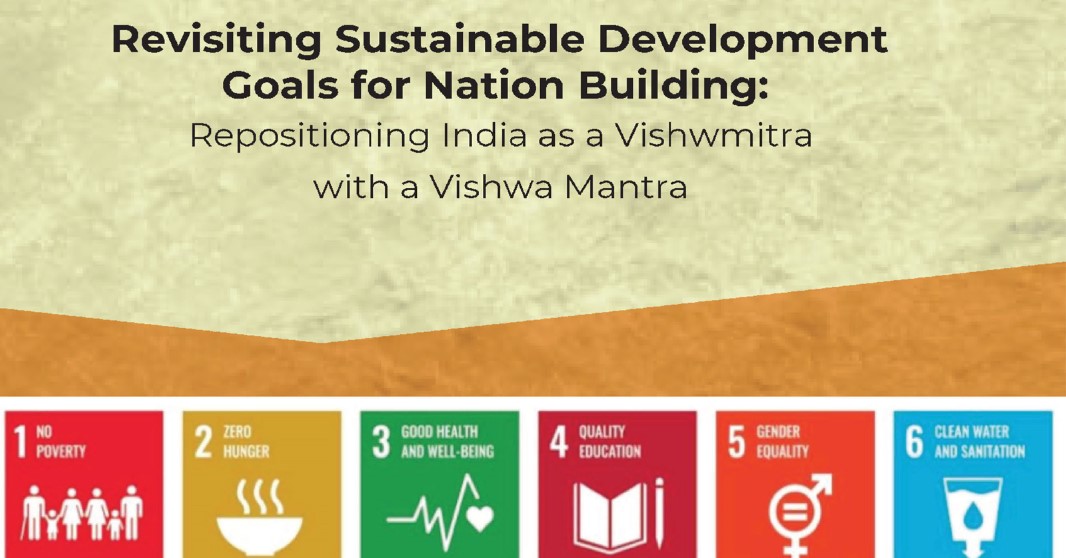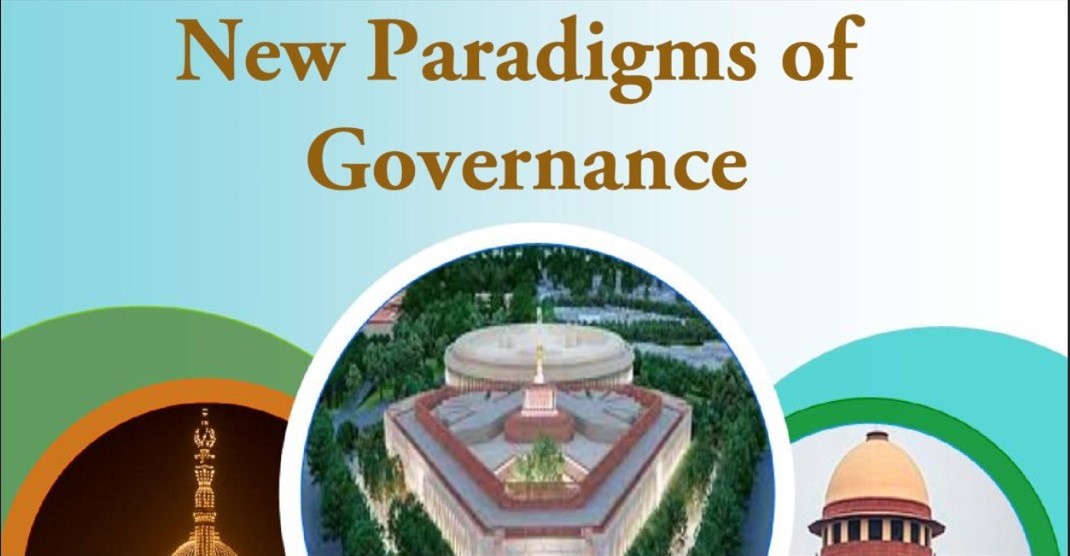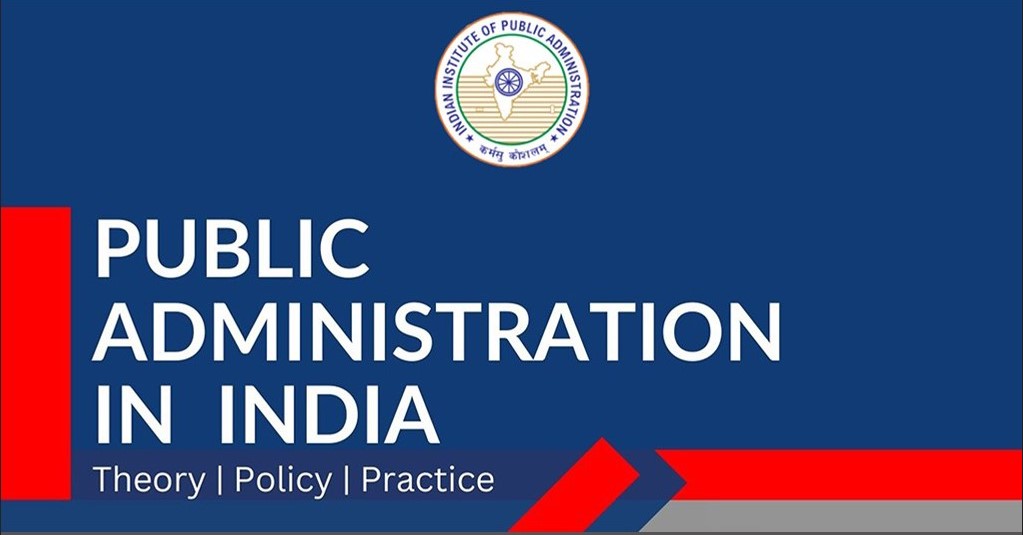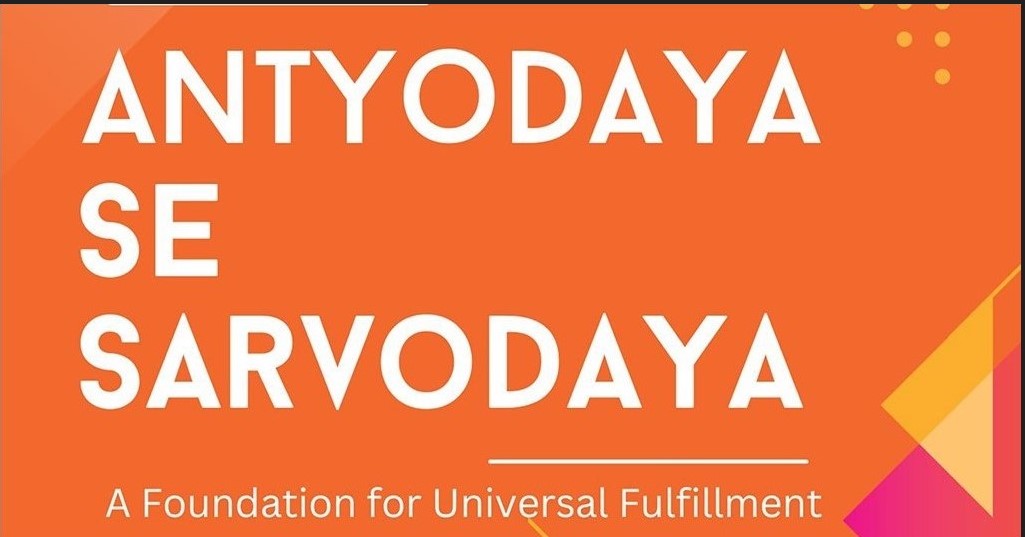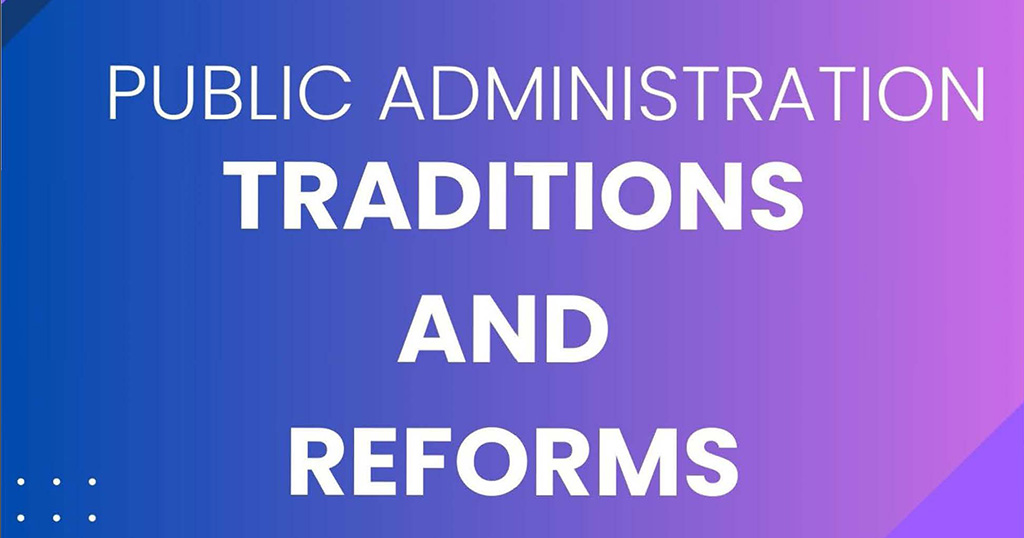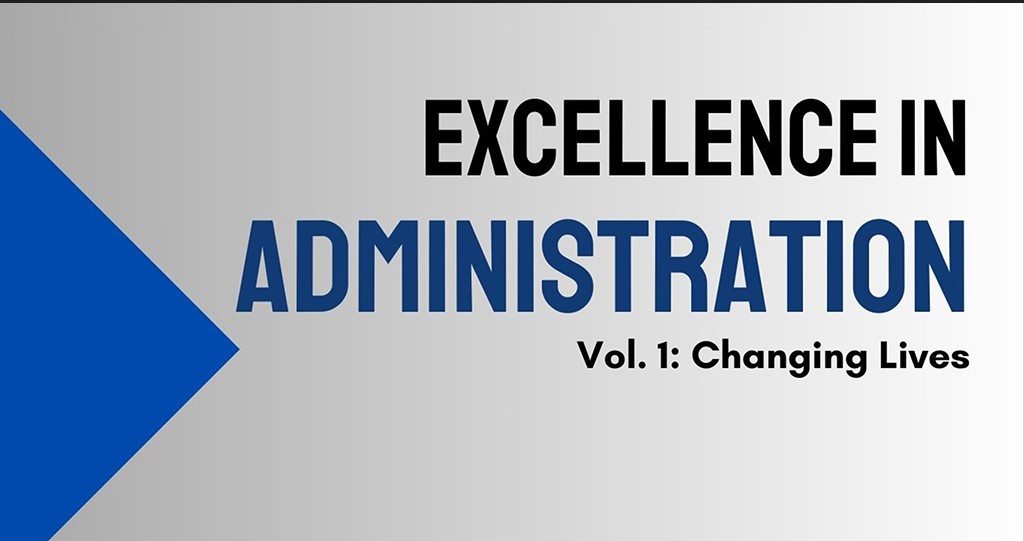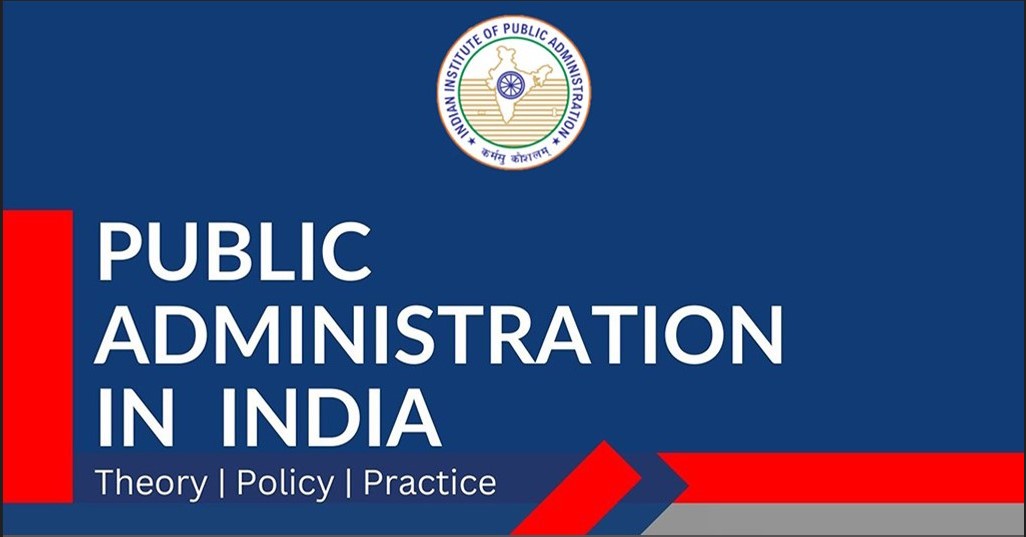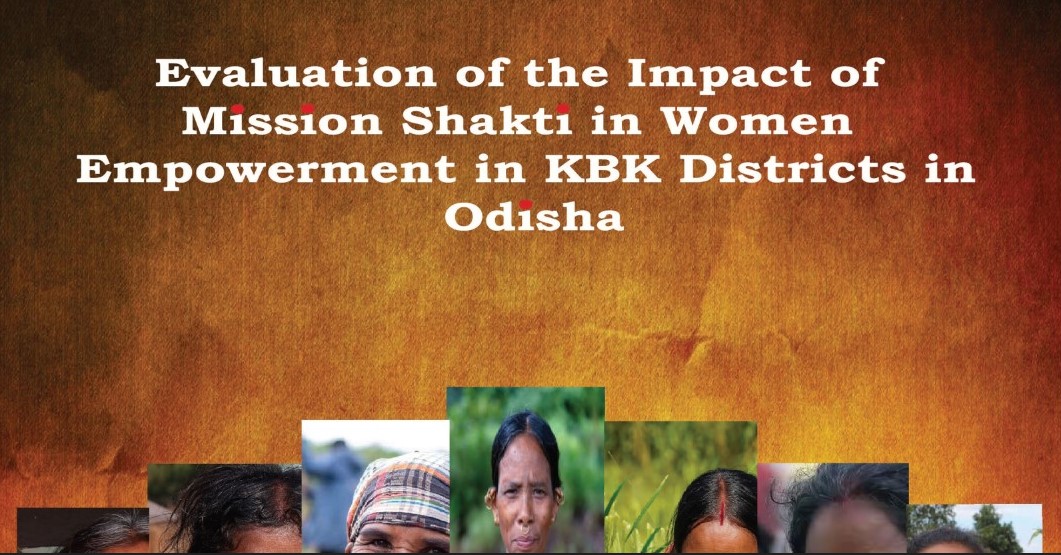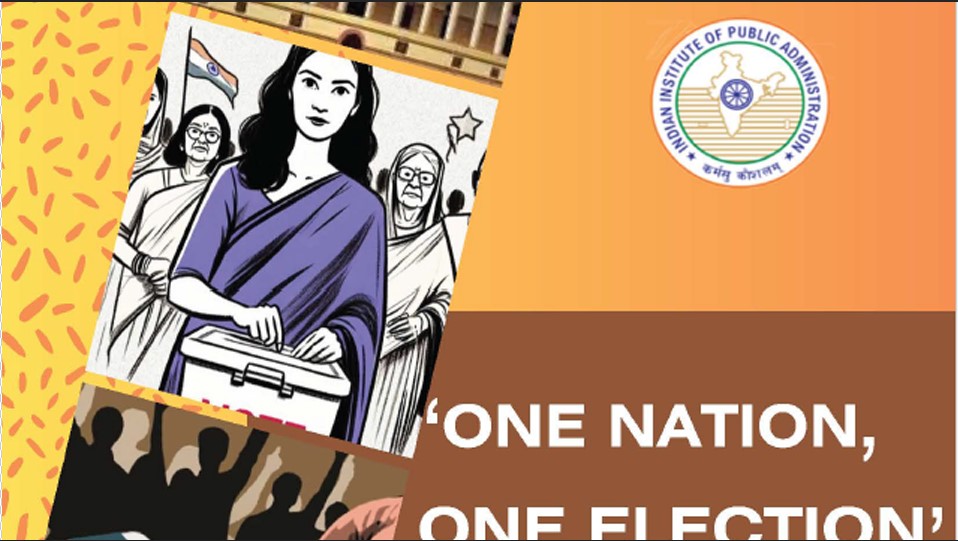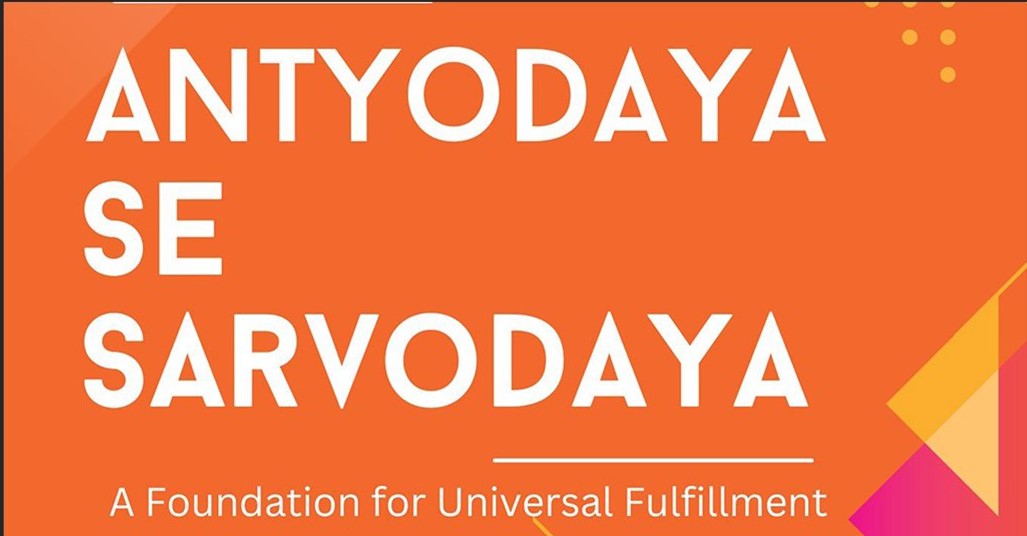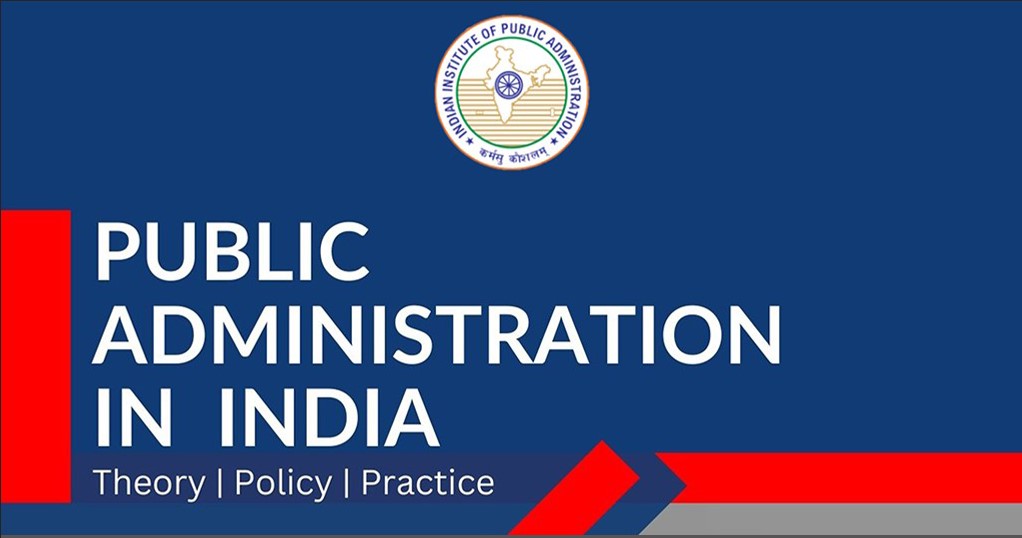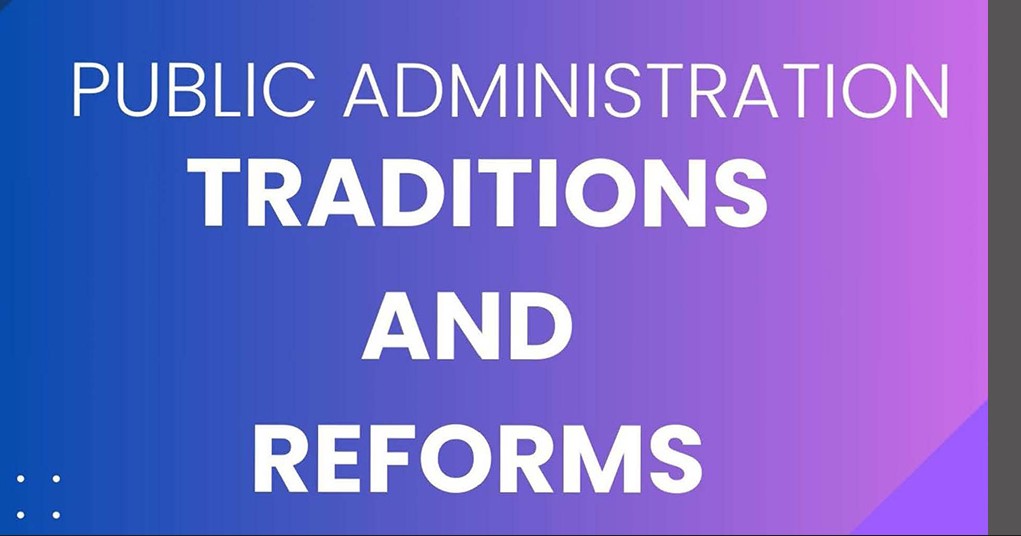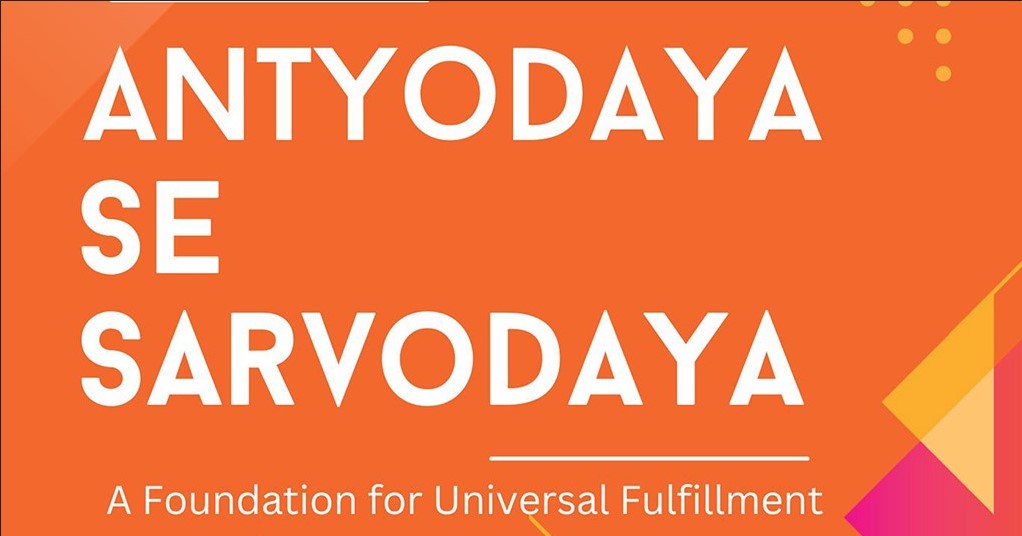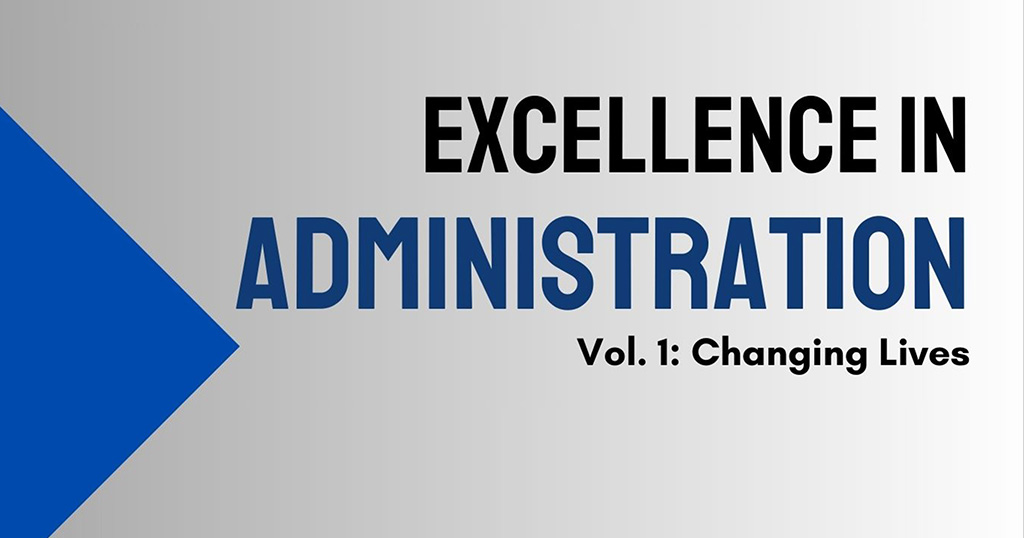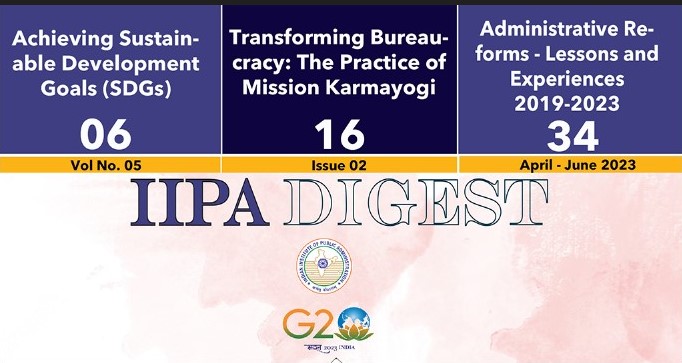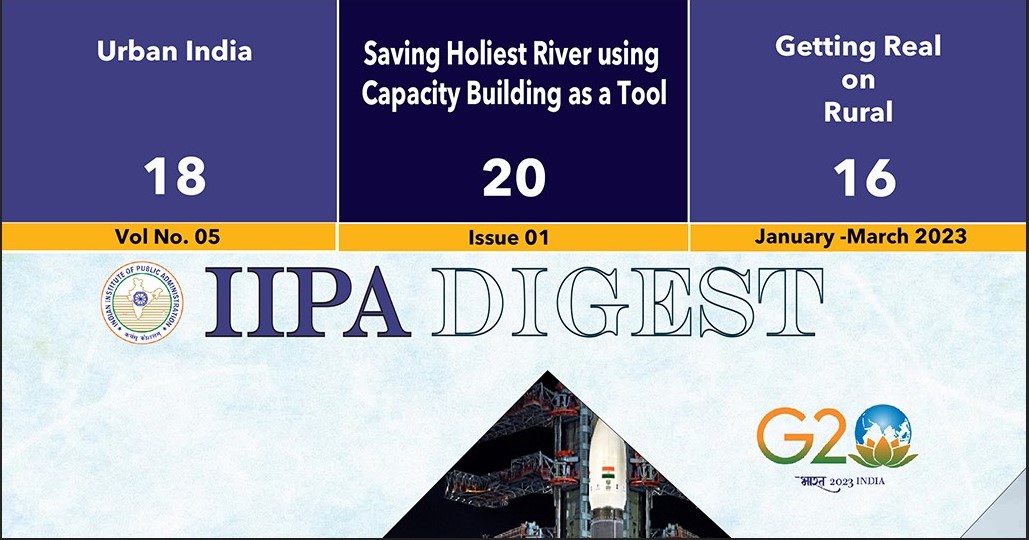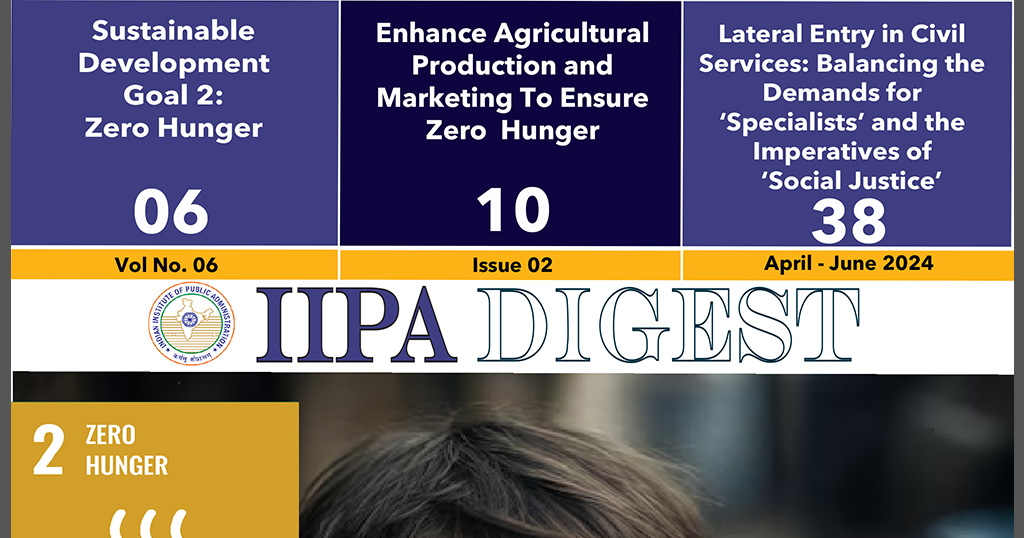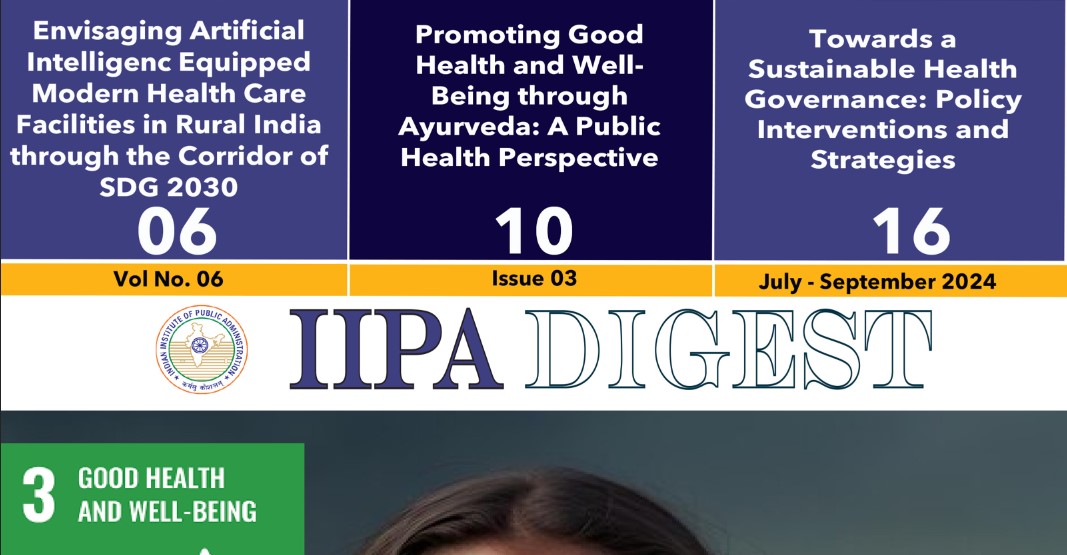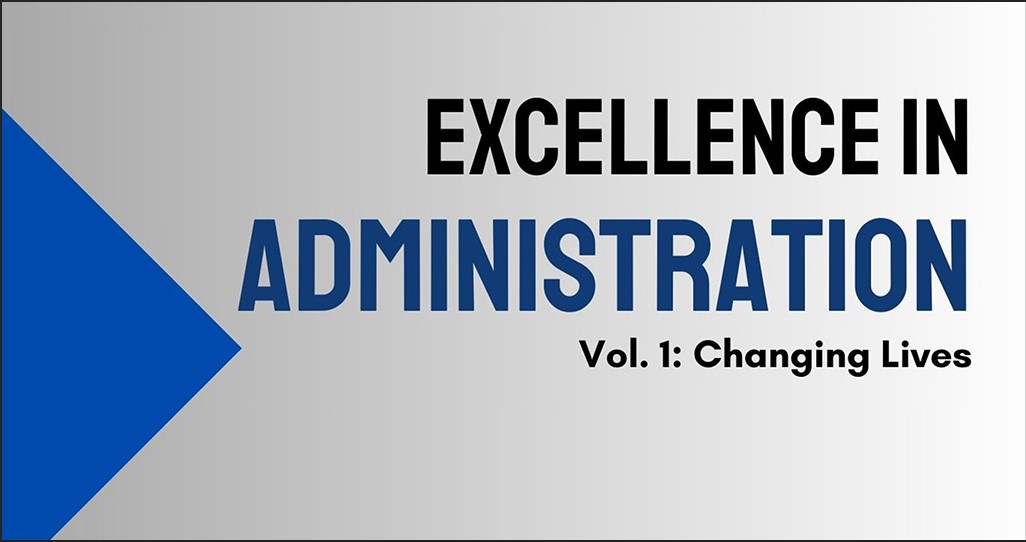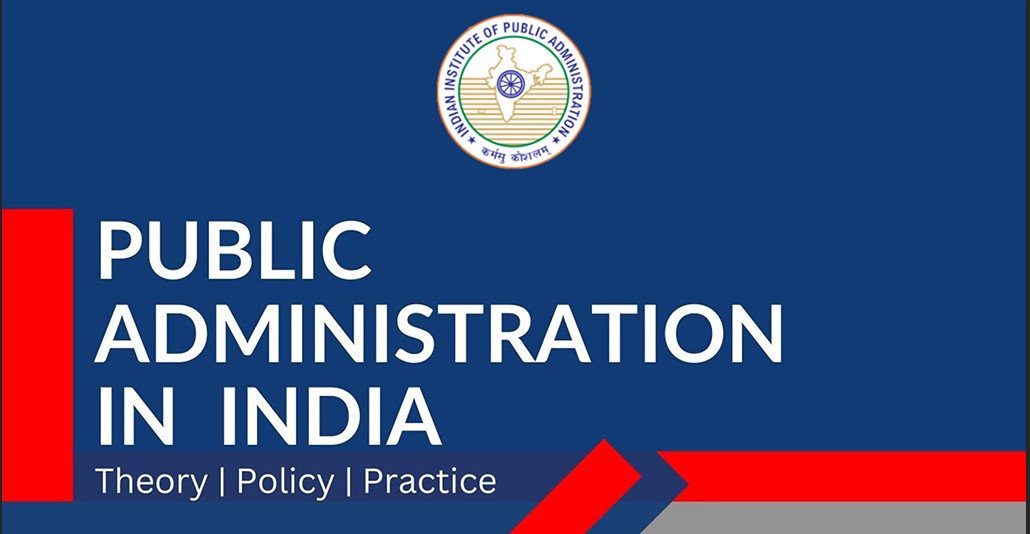Financial Management in India: Institutions, Instruments and Innovations in a Federal Polity
Abstract
Financial management constitutes the cornerstone of modern democratic governance, determining not only the allocative priorities of the state but also the operational credibility of public institutions. This chapter critically examines the architecture and evolution of financial management in India, with particular emphasis on its constitutional foundations, institutional frameworks, and policy instruments. Situated within the broader paradigm of fiscal federalism, the chapter explores how budgeting processes, financial oversight, and resource devolution mechanisms collectively shape the contours of India’s public finance ecosystem.
The discussion begins by analysing the budget as an inherently political document reflecting not merely fiscal decisions but ideological preferences and redistributive choices. It further investigates the mechanisms of legislative control over public expenditure, the strategic role of the Ministry of Finance in macro-fiscal governance, and the transformation of accounting systems through digital platforms such as PFMS and e-Kuber. Special focus is accorded to the functional autonomy and systemic relevance of the Comptroller and Auditor General (CAG) and Controller General of Accounts (CGA) in enhancing financial accountability.
The chapter evaluates the performance and controversies surrounding the Finance Commission, the structural asymmetries in GST Council voting, and the underutilised potential of State Finance Commissions. Drawing from international best practices in public financial management from Estonia’s real-time fiscal tracking to Brazil’s participatory budgeting the chapter offers a comparative lens to interrogate India's fiscal trajectory. With embedded theoretical relevance and field-level illustrations, it presents financial management not as a technocratic exercise, but as a democratic commitment requiring ethical stewardship and institutional innovation.
Keywords: Public Finance, Fiscal Federalism, Budgetary Governance, Financial Accountability, Public Administration
23. Introduction-Financial Governance as the Soul of the State
The famed Arthashastra, penned by Kautilya over two millennia ago, opens its first chapter with a powerful maxim: “From the treasury comes the power of the state.” This ancient insight remains remarkably relevant in the context of modern public administration, where the ability of governments to govern is inextricably tied to their financial capacity and accountability.
Financial management is not merely a technocratic exercise of balancing receipts and expenditures. It is a dynamic process that reflects political choices, enforces constitutional norms, supports policy delivery, and enshrines accountability in a democracy. In India’s parliamentary system, financial management manifests in the Union and State Budgets, the working of institutions such as the Ministry of Finance, Finance Commission, CGA and CAG, and the regulatory frameworks of Parliamentary control, federal transfers, and audits.
The foundations of financial governance are laid in Part XII of the Indian Constitution (Articles 264–300A), which detail the financial relationship between the Union and States, the establishment of the Consolidated Fund, Contingency Fund, and Public Account, and the critical roles of institutions like the Finance Commission and the Comptroller and Auditor General of India. These frameworks embody the principles of accountability, efficiency, and equity in resource allocation and usage.
Post-liberalisation, the landscape of financial governance in India has undergone significant transformation. The shift towards outcome-based budgeting, the introduction of Goods and Services Tax (GST) as a landmark in fiscal federalism, and the integration of digital tools like PFMS (Public Financial Management System) have modernised fiscal operations. However, the challenges of populist budgeting, non-performing assets, and weak state finance commissions continue to strain the public finance system.
Globally, nations such as Finland, Brazil, and New Zealand have pioneered participatory and technology-driven budgeting processes. India is now slowly integrating these innovations into its own model of inclusive and accountable fiscal governance.
This chapter delves into the theory, practice, and evolution of financial management in India, equipping civil services aspirants with a deep understanding of how finance, politics, and administration converge in shaping the developmental future of the nation.
23.1 Budget as a Political Instrument
The annual budget is not simply a statement of government income and expenditure it is a political manifesto in fiscal form, laying bare the ideological inclinations, priorities, and strategic decisions of the ruling government. As Aaron Wildavsky famously argued in The Politics of the Budgetary Process (1964), budgeting is “not primarily an economic act but a political act.” This is particularly evident in parliamentary democracies like India, where the budget reflects the dynamic interface of political mandates, developmental goals, coalition pressures, and fiscal realities.
23.1.1 Budget as a Tool of Resource Allocation
In India, the Union Budget not only directs national expenditure but symbolises the government's response to prevailing socioeconomic and political challenges. For instance, the 2024–25 Union Budget allocated over ₹11.11 lakh crore towards capital expenditure, reflecting the government's intent to boost long-term infrastructure growth while also continuing welfare schemes like PM-Awas Yojana, PM-KISAN, and food security.
Decisions about where to allocate resources whether towards urban development or rural employment, defence or education are fundamentally political. They reflect choices that impact voter groups, electoral narratives, and regional balances. This is where budgeting transforms into policymaking.
23.1.2 Populism and Electoral Calculus
India has often seen populist budgets in the run-up to general elections. Examples include loan waivers for farmers, tax exemptions for middle-income groups, and large-scale employment guarantees. These measures, while beneficial in the short term, often come at the cost of fiscal stability, leading to higher deficits and reduced capital investment.
Such patterns are not unique to India. In Latin America, countries like Argentina and Venezuela have faced long-term economic crises partly because of politically-driven budgeting cycles. In contrast, countries like Germany have implemented constitutional limits on populist spending through mechanisms like the "Debt Brake" (Schuldenbremse) a principle that could inform India's future fiscal reform debates.
23.1.3 Gender Budgeting: Politics of Equity
Introduced in India in 2005–06, gender budgeting is an explicit political effort to correct systemic imbalances. Ministries are required to assess the gender impact of allocations and spending. While the allocations under Gender Budgeting were ₹2.23 lakh crore in 2023–24, the actual mainstreaming of gender outcomes remains limited. In contrast, South Korea and Sweden have integrated gender budgeting into all ministries, linking it to performance reviews.
Contextual Trigger: The growing debate on pre-election populist spending vs fiscal prudence.
23.1.4 Political Economy of Budget Language
Even the language of the budget speech is political. A 2024 IndiaSpend word cloud analysis of budget speeches from 2014–2024 revealed terms like self-reliance, startup, women empowerment, and digital economy dominate recent years, replacing earlier tropes of poverty alleviation or infrastructure bottlenecks. This marks a shift in political communication through fiscal documents.
23.1.5 Budget Transparency and Participatory Budgeting
Transparency is central to political legitimacy. While India has made strides in publishing budget documents and citizen summaries, models from Brazil’s Porto Alegre or Kenya’s Nairobi slum budgeting pilot show how local participatory budgeting improves public satisfaction and allocative equity. These approaches are yet to be institutionalised in India beyond select municipal-level innovations (e.g., Pune Municipal Corporation).
In a nutshell, the budget is the most authoritative expression of the government’s priorities. It is where politics and public finance intersect. As future public administrators, civil servants must recognise that technical neutrality is a myth in budgeting. Every rupee allocated or denied is a policy decision with political roots and democratic consequences.
23.2 Parliamentary Control of Public Expenditure
In a parliamentary democracy, Parliament’s control over public expenditure is a foundational principle of constitutional governance. Rooted in Article 112 of the Constitution, the process of budget approval, legislative scrutiny, and auditing of expenditure ensures that the executive remains accountable to the people through their elected representatives.
The idea that “no taxation without representation” is operationalised through parliamentary powers to authorise the Annual Financial Statement (the Budget), control appropriations, and examine how public funds are utilised.
23.2.1 Budgetary Process in the Parliament
The Union Budget is presented by the finance minister in the Lok Sabha, and subsequently goes through the following stages:
1. General Discussion: Allows members to discuss the broad outlines of the budget.
2. Vote on Account: Grants interim spending authority (usually for two months).
3. Demand for Grants: Each ministry's expenditure demand is debated.
4. Appropriation Bill: Grants legal approval to withdraw money from the Consolidated Fund of India.
5. Finance Bill: Enacts new tax proposals.
While this structure ensures procedural clarity, in practice, limited time and political constraints often lead to bulk approval without debate. According to PRS Legislative Research (2023), over 94% of budgetary demands were passed without discussion in the last five years.
The Union Budget is presented by the finance minister in the Lok Sabha, and subsequently goes through the following stages:
Figure 1
23.2.2 Committees: Backbone of Parliamentary Oversight
India’s Committee system enhances budgetary scrutiny through:
1. Public Accounts Committee (PAC): Examines CAG audit reports and public expenditure irregularities.
2. Estimates Committee: Evaluates the efficiency of fund utilisation.
3. Departmentally Related Standing Committees (DRSCs): Review demands for grants of each ministry.
For example, the PAC's review of the 2G spectrum allocation led to significant political accountability and criminal investigations showcasing the impact of legislative scrutiny beyond mere procedure.
23.2.3 Digital Innovations and Gaps
To modernise legislative scrutiny, the Digital Parliament Initiative (2023) has introduced:
• AI-based search in budget documents,
• Real-time annotation tools for MPs, and
• Committee dashboards to track fund utilisation.
Despite these advancements, constraints persist:
• Time limitations during budget sessions
• Party-line voting that often stifles dissent
• Poor follow-up on committee recommendations
23.2.4 Comparative Perspective: UK and Canada
In Canada, the Parliamentary Budget Officer (PBO) independently evaluates fiscal proposals, enhancing transparency. In contrast, India lacks an independent budgetary evaluation office, relying instead on internal ministry documents and the CAG’s post-facto audits.
The UK Treasury Select Committee conducts live hearings on budget plans, inviting economists, NGOs, and government officials practices that could inspire India's reform roadmap.
In summary, Parliament’s control over public expenditure is not merely a constitutional ritual it is the guardian of democratic accountability. However, to revitalise this control, India must combine institutional mechanisms with technological innovation and citizen engagement, ensuring that every rupee spent carries the sanction of scrutiny and the weight of responsibility.
23.3 Role of the Ministry of Finance in Fiscal and Monetary Stewardship
The Ministry of Finance (MoF) stands as the fiscal nerve centre of the Indian state. Entrusted with the task of economic governance, budgetary planning, resource mobilisation, and inter-governmental financial coordination, it exercises a pivotal role in shaping India’s development trajectory. Its decisions influence everything from inflation control and infrastructure investment to welfare spending and fiscal federalism.
In the intricate architecture of Indian governance, the Ministry operates not merely as an administrative body but as a strategic institution balancing economic realism with political aspiration.
23.3.1 Organisational Architecture
The MoF comprises five departments, each with a distinctive mandate:
1. Department of Economic Affairs (DEA): Oversees macroeconomic policy, international finance, and budgeting.
2. Department of Expenditure: Controls government spending and implements PFMS.
3. Department of Revenue: Manages direct and indirect taxes (CBDT and CBIC).
4. Department of Financial Services (DFS): Supervises banking, insurance, and financial inclusion.
5. Department of Investment and Public Asset Management (DIPAM): Handles disinvestment and asset monetisation.
Each department plays a coordinated role in maintaining the fiscal balance, ensuring efficient fund utilisation, and promoting economic stability.
Table 1: Organisational Architecture of the Ministry of Finance, Government of India
23.3.2 Fiscal Policy Management: Balancing Growth and Prudence
Fiscal policy, the domain of taxation and public expenditure, is central to economic planning. The MoF drafts the Union Budget, estimates receipts and expenditures, manages fiscal deficit targets, and implements counter-cyclical strategies during economic downturns.
1. In FY 2023–24, the MoF successfully reduced the fiscal deficit to 5.8% of GDP, a marked decline from the pandemic-induced high of 9.5% in 2020–21. The target is ~4.9% as per Budget 2024–25.
2. The FRBM Act (2003) provides a statutory framework for fiscal responsibility, though deviations are allowed under exceptional circumstances like COVID-19.
23.3.3 Monetary Policy Interface: MoF and RBI
Although the Reserve Bank of India (RBI) is autonomous in formulating monetary policy, it works in tandem with the MoF for macro-fiscal coordination. The institutionalised Monetary Policy Committee (MPC) framework (est. 2016) has formalised this relationship.
• The MoF provides fiscal cues for inflation targeting, interest rate adjustments, and liquidity management.
• During the pandemic, the MoF-RBI synergy ensured liquidity infusion, loan moratoriums, and a targeted credit stimulus under the Atmanirbhar Bharat package.
23.3.4 Structural Reforms and Strategic Policy Levers
The MoF has been at the forefront of significant reforms:
• GST Implementation (in coordination with States and the GST Council)
• Digitalisation of financial governance (e.g., PFMS, e-Kuber)
• Asset monetisation pipeline under DIPAM
• Creation of SANKALP a decision-support dashboard for real-time expenditure tracking.
The “Digital Budget 2021”, a first in Indian history, demonstrated the Ministry’s adaptability in using technology to enhance transparency and citizen access.
23.3.5 Fiscal Federalism and GST Council: Tensions and Cooperation
While the MoF anchors India’s centralised fiscal strategy, it also negotiates with states over fund devolution. The GST Council, chaired by the Union Finance Minister, embodies cooperative federalism but has also exposed asymmetries in decision-making.
23.3.6 Global Best Practices: Comparison and Reflection
Countries like Germany have introduced the “Debt Brake Rule”, ensuring long-term fiscal sustainability. In Indonesia, the finance ministry’s localised fiscal councils allow decentralised financial planning, enhancing responsiveness. India’s MoF can evolve similarly by integrating evidence-based budgeting, climate-linked fiscal forecasting, and citizen-prepared budgets in select districts.
To conclude this section, the Ministry of Finance is more than a custodian of funds; it is the institutional conscience of India’s economic sovereignty. As India strides toward a $5 trillion economy, the Ministry must innovate fiscal tools that are growth-oriented, inclusive, and anchored in constitutional values. Future civil servants must understand its structure not just as an organ of the executive, but as a keystone in the architecture of democratic governance.
23.4 Budget and Accounting Techniques
The techniques used to prepare, present, and manage a government’s budget reflect not just financial acumen but institutional maturity, transparency, and readiness for reform. In India, the evolution of budgetary and accounting techniques showcases a shift from traditional practices to more dynamic, technology-enabled, and performance-linked financial systems.
At its core, public financial accounting involves recording, classifying, and summarising government transactions to ensure that expenditure is legal, authorised, efficient, and accountable.
23.4.1 Traditional Accounting: Cash-Based System
India predominantly follows a cash-based accounting system, where transactions are recorded only when actual cash is received or paid. This method, while simple, has several limitations:
• It does not reflect liabilities or unpaid obligations.
• It is less suited for performance measurement, especially in welfare or capital-intensive projects.
Despite its limitations, the cash system offers predictability and is less susceptible to manipulation. It continues to be used under the Government Accounting Rules, 1990, which are aligned with Article 150 of the Constitution, empowering the President (on CAG’s advice) to prescribe accounting standards.
23.4.2 Towards Accrual Accounting: Modernisation and Reform
Recognising global trends, the Government of India has initiated steps toward accrual-based accounting, where transactions are recorded when economic value is created, not merely when cash is exchanged.
Seminal Global Source: The International Public Sector Accounting Standards (IPSAS) developed by IFAC advocate accrual-based systems to improve transparency and comparability.
Benefits of Accrual Accounting:
• Reflects true financial position (e.g., pensions, subsidies due, delayed payments)
• Improves long-term fiscal planning
• Enables performance audits and cost-benefit analysis
However, full-scale transition faces challenges like lack of skilled personnel, weak IT systems in states, and legal inertia. A hybrid system, or modified cash basis, is being explored as an intermediate model.
23.4.3 Technological Enablers: PFMS and IFMIS
The Public Financial Management System (PFMS), developed by the Controller General of Accounts (CGA), is a milestone in integrating accounting with real-time tracking of fund flow. It ensures:
• Real-time accounting across ministries and states
• Direct Benefit Transfers (DBT) tracking
• Integration with banks and treasury portals
The Integrated Financial Management Information System (IFMIS) goes a step further, combining budget planning, expenditure control, payroll, pension, and treasury functions.
Case illustration: In Telangana, the IFMIS has enabled biometric validation of bill processing, helping curb leakages and ghost entries.
23.4.4 Innovations and Pilots
• Blockchain Pilots: The Rajasthan Treasury Department in 2023 began experimenting with blockchain-backed audit trails for welfare transfers.
• AGAP in Kerala (2022): The Automated Governance Accounting Platform uses IoT-linked data to cross-verify physical and financial progress in MGNREGA and rural roads.
• e-Kuber: The RBI-managed system provides core banking solutions for government receipts and payments, reducing float time and enhancing reconciliations.
23.4.5 Comparative Insight
• New Zealand, the first country to adopt full accrual budgeting (1994), links its budget to departmental performance goals and long-term liabilities.
• Ghana has introduced a three-tier accounting reform model with gradual accrual integration at the local government level.
Table 2: Cash vs Accrual Accounting
Essentially, India’s budget and accounting systems are evolving to meet the demands of a digitised, decentralised, and delivery-driven state. Future public administrators must grasp not only how money is accounted for, but how it connects to public outcomes, ethical governance, and citizen trust. As India moves toward becoming a $5 trillion economy, strengthening its financial accounting architecture is not just a technical imperative it is a governance necessity.
23.5 Role of the Controller General of Accounts (CGA)
In India’s vast and complex financial administration, the Controller General of Accounts (CGA) occupies a crucial position as the chief accounting advisor to the Government of India. Established in 1976 under the Department of Expenditure, Ministry of Finance, the CGA ensures the integrity, accuracy, and timeliness of government accounting, acting as a bridge between policy intention and financial record.
The CGA’s mandate is derived from Article 150 of the Constitution, which authorises the President to prescribe the form of accounts based on the advice of the Comptroller and Auditor General (CAG). While the CAG is responsible for audit, the CGA is responsible for maintaining accounts of the Union government and supervising the accounting functions across ministries.
23.5.1 Core Functions of the CGA
• Preparation and consolidation of monthly and annual accounts of the Union government
• Submission of Union Civil Accounts to the President
• Development of accounting procedures and internal controls
• Payment, accounting, and pension services for Central Government employees
• Supervision of Pay & Accounts Offices (PAOs) under various ministries
• Management of PFMS and its integration with banking systems
23.5.2 Digital Transformation: PFMS and eLekha
The Public Financial Management System (PFMS), administered by CGA, is a groundbreaking reform in public accounting. It facilitates:
• Real-time fund tracking across schemes and ministries
• Just-in-time payments through DBT-linked architecture
• Integration with over 90,000 implementing agencies and banks
By 2023–24, more than ₹14 lakh crore worth of transactions were processed through PFMS, enhancing transparency in schemes like PM-KISAN, NSAP, and Mahatma Gandhi NREGA.
The e-Lekha portal, managed by CGA, ensures digital compilation of accounts, enabling monthly reconciliations and state-wise expenditure reviews.
Case Illustration:
In Jharkhand, integration of state treasuries with e-Kuber and PFMS allowed real-time fund flow tracking to block-level education schemes reducing delays and leakages.
23.5.3 Comparative Insight
• South Korea’s National Treasury Information System is a near real-time ledger modelled on PFMS.
• UK’s Whole of Government Accounts (WGA) consolidates accounts across government agencies, much like India’s e-Lekha but at an advanced accrual-based stage.
India’s model is still largely cash-based, but CGA’s reforms are enabling a gradual shift towards performance-linked accounting, aligned with global public finance norms.
23.5.4 Challenges and the Road Ahead
Despite reforms, the CGA faces challenges:
• Capacity gaps in local PAOs
• Limited analytics for expenditure effectiveness
• Lack of integration with physical progress tracking (except in pilot states)
Future pathways include:
• AI-powered anomaly detection in fund flows
• Geo-tagged expenditure reconciliation (e.g., roads, schools)
• Enhanced collaboration with CAG for performance audits
To conclude this section, the CGA is emerging as a technological vanguard in India’s public finance landscape. From a record-keeping role, it is evolving into a strategic actor in public expenditure management, fiscal transparency, and policy support. For future administrators, understanding the CGA’s evolving mandate is crucial to envisioning a governance model where every rupee is traceable, purposeful, and people-centric.
23.6 Comptroller and Auditor General (CAG) of India
The Comptroller and Auditor General of India (CAG) is one of the most powerful institutions in India’s democratic framework, mandated to act as the constitutional guardian of public purse. Enshrined under Articles 148 to 151 of the Constitution, the CAG holds a pivotal role in ensuring accountability, transparency, and integrity in the financial operations of the executive.
Referred to by Dr. B.R. Ambedkar as the "most important officer under the Constitution", the CAG operates not only as an auditor but as a sentinel of democracy exposing inefficiencies, misuse, and gaps in public expenditure.
23.6.1 Constitutional Position and Independence
Appointed by the President, the CAG enjoys security of tenure, and his conditions of service cannot be altered to his disadvantage after appointment.
• Submits audit reports to the President/Governor, which are laid before Parliament or State Legislatures.
• Serves as an external auditor for institutions like Union and State governments, PSUs, autonomous bodies, and local bodies.
This independence is institutional, not merely statutory ensuring that the CAG’s audits are unbiased and free from executive interference.
23.6.2 Scope and Types of Audits
The CAG conducts three primary types of audits:
1. Compliance Audit: Ensures adherence to financial rules, regulations, and legality of transactions.
2. Performance Audit: Evaluates the economy, efficiency, and effectiveness of government programmes.
3. Propriety Audit: Scrutinises decisions for ethical soundness and public interest, beyond legal correctness.
Example:
The Performance Audit of Ujjwala Yojana (2022) by CAG revealed gaps in LPG refill cycles and targeting, guiding policy improvements and public discourse.
23.6.3 From Post-Facto Audit to Real-Time Insights
Traditionally a post-facto auditor, the CAG is transitioning into a data-driven, proactive watchdog, with the use of:
• AI-powered analytics to flag expenditure anomalies
• GIS-based auditing for rural development schemes
• Cross-verification of beneficiary databases for leakage detection
The Audit Diwas initiated in 2021 symbolises a renewed commitment to citizen-centric auditing and policy impact.
23.6.4 Global Benchmarks
India’s CAG can be compared with other robust institutions:
• UK’s National Audit Office (NAO): Conducts Value for Money (VfM) audits and holds live hearings with parliamentary committees.
• US Government Accountability Office (GAO): Reports directly to Congress and is embedded in policymaking.
• Australia’s Auditor-General uses a public dashboard to visualise real-time audit impact on service delivery.
India's CAG is constitutionally stronger but can benefit from institutionalising a public feedback loop and real-time grievance auditing mechanisms.
23.6.5 Innovations and Future Potential
India’s CAG Vision 2040 Document outlines progressive reforms:
• AI-integrated audit trails
• ESG (Environmental, Social, Governance) compliance audit frameworks
• Integrated audit of digital assets and e-service platforms
Additionally, the CAG is piloting Concurrent Audits of DBT schemes enabling dynamic intervention rather than reactive assessment.
Field Example:
In Odisha, the CAG used geo-tagged photos and fund-flow data to audit the PMGSY rural roads, discovering significant inconsistencies in reported vs. actual work.
Essentially, the CAG is not merely a watchdog it is the moral compass of financial administration. As India advances toward ambitious developmental goals under India@2047, the CAG must be empowered further through real-time data access, parliamentary responsiveness, and institutional follow-up mechanisms. For aspiring civil servants, engaging with the CAG’s work is not optional it is essential to cultivating an ethos of ethical governance and fiscal responsibility.
23.7 Finance Commission and Fiscal Federalism
The Finance Commission (FC) is a constitutional body central to the functioning of India’s fiscal federalism. Envisaged as an impartial arbiter of resource distribution, the FC is constituted every five years under Article 280 of the Constitution to recommend the sharing of taxes, grants-in-aid, and measures to strengthen the financial position of states.
In a country as diverse as India geographically, demographically, and economically the Finance Commission plays a foundational role in harmonising vertical and horizontal equity, enabling cooperative federalism and fiscal justice.
23.7.1 Constitutional Role and Mandate
The President of India appoints the Finance Commission to:
• Recommend the distribution of net tax proceeds between the Union and the States (vertical devolution)
• Determine the inter se distribution among states (horizontal devolution)
• Recommend grants-in-aid of revenues, especially to deficit or special category states
• Propose measures to augment the resources of panchayats and municipalities
The recommendations are advisory, but in practice, they are treated with great sanctity, forming the basis of Union Budget allocations and state planning.
Figure 2
23.7.2 15th Finance Commission: Key Recommendations
The 15th Finance Commission (2021–26), chaired by N.K. Singh, made several important and sometimes contested recommendations:
• Recommended 41% of divisible tax pool to be devolved to states (down from 42% to account for Jammu & Kashmir becoming a Union Territory)
• Introduced performance-based incentives for power sector reforms, solid waste management, and agricultural infrastructure
• Allocated ₹1.42 lakh crore as local body grants, of which a significant portion was performance-linked
23.7.3 Fiscal Federalism and GST: A New Architecture
With the introduction of Goods and Services Tax (GST) in 2017, the nature of fiscal federalism in India changed drastically:
• States surrendered their independent taxing powers in return for a share in GST collections.
• The GST Council, though federal in structure, gives veto power to the Centre.
23.7.4 State Finance Commissions: The Weakest Link
Despite constitutional backing under Articles 243-I and 243-Y, State Finance Commissions (SFCs) are often neglected. Many states fail to constitute them on time or ignore their recommendations.
23.7.5 Performance Grants and Financial Accountability
The 15th FC introduced performance grants tied to measurable outcomes:
• Revenue collection efficiency
• Service delivery improvements
• Timely audits and financial disclosures by municipalities
23.7.6 Comparative Lens: Lessons from Other Federations
• Germany’s Equalisation System balances tax capacities and expenditure needs via a rule-bound formula, with strong constitutional safeguards.
• Australia’s Commonwealth Grants Commission adopts a “horizontal fiscal equalisation” principle, funded through GST with performance-linked audits.
India’s model, while politically accommodative, lacks institutional permanence and independent enforcement mechanisms.
Table 3: Comparative Models of Fiscal Federalism: India and Global Examples
This comparative table highlights how India’s model of fiscal federalism contrasts with global practices in terms of institutional robustness, revenue sharing, and innovations. It underscores the need for stronger enforcement mechanisms and continuous reform. Essentially, the Finance Commission remains the pivot of India’s fiscal federalism, but its effectiveness is constrained by executive discretion, political bargaining, and asymmetries in power and capacity. As India moves toward fiscal maturity, strengthening SFCs, institutionalising objective devolution criteria, and ensuring compliance with performance-linked grants will be critical. A future-ready fiscal federalism demands not just constitutional design but administrative will and cooperative ethos.
23.8 Public Audit and Local Bodies – Strengthening Accountability
With the decentralisation of governance through the 73rd and 74th Constitutional Amendments, local bodies Panchayati Raj Institutions (PRIs) and Urban Local Bodies (ULBs) have emerged as the frontline agents of public service delivery. This transformation necessitated a corresponding shift in the financial accountability framework, particularly in the realm of public audits, to ensure transparency, compliance, and efficient utilisation of resources at the grassroots.
23.8.1 Constitutional and Institutional Context
Articles 243-I and 243-Y of the Constitution mandate the State Finance Commissions (SFCs) to recommend mechanisms for devolving financial resources to local governments. As local bodies receive untied and scheme-based grants, the need for effective audit and accountability mechanisms becomes critical for:
• Preventing fund diversion
• Promoting transparency in procurement
• Ensuring citizen-centric outcomes
The Comptroller and Auditor General of India (CAG) was empowered in 2011 through administrative circulars and amendments to the DPC Act, 1971, to audit local bodies, especially those receiving Central funds.
23.8.2 Performance-Based Grants: A Shift from Entitlement to Accountability
The 14th and 15th Finance Commissions introduced performance-linked grants for local bodies, tying fund releases to:
• Timely submission of audited accounts
• Transparency in budgeting
• Use of e-governance platforms
Case Example:
In Madhya Pradesh, 18 municipal corporations received performance grants under the 15th FC after complying with timely accounting disclosures and property tax digitisation.
23.8.3 Social Audit: Citizen-Led Oversight
Perhaps the most transformative innovation in grassroots accountability is the social audit a participatory tool that enables beneficiaries to verify the authenticity of government expenditure on public works and welfare schemes.
• First institutionalised in Andhra Pradesh for MGNREGA, social audits were later mandated nationally through the MGNREGA Audit of Scheme Rules, 2011.
• In Jharkhand, social audits of housing and pension schemes unearthed significant ghost beneficiaries, leading to major clean-ups in beneficiary databases.
Social audit units, however, face challenges:
• Dependence on state government support
• Resistance from vested interests
• Limited institutionalisation in urban local bodies
Yet they remain a powerful tool of bottom-up accountability, giving real meaning to fiscal decentralisation.
23.8.4 Technology and Transparency: Emerging Frontiers
The use of digital platforms like:
• PRIASoft for Panchayat accounting
• e-GramSwaraj Portal for work tracking
• Maharashtra’s TULANA dashboard for expenditure benchmarking
is transforming how local financial data is published, audited, and analysed.
These platforms enable not only vertical audit oversight by state and central bodies but also horizontal accountability through citizen vigilance.
23.8.5 Global Perspective
• In the Philippines, the Citizen Participatory Audit Project combines civil society groups with auditors to monitor local infrastructure projects.
• Kenya’s county budgets are open to public hearings, where citizen audit reports are submitted for legislative discussion.
India’s decentralised audit model is evolving, but greater institutional support and legislative backing for citizen-led audits can enhance their efficacy.
To conclude this section, as India deepens democratic decentralisation, financial accountability at the local level is no longer optional it is foundational. Strengthening public audits through capacity building, digital tools, and citizen participation will not only plug leakages but foster a culture of fiscal discipline, transparency, and trust in governance. The future of accountable India lies not in its capital cities but in its gram panchayats and town halls, where every rupee spent touches lives directly.
23.9 Non-Performing Assets, Financial Inclusion, and Citizen Responsibility
A sound public financial system must ensure efficient resource mobilisation, responsible lending, and equitable access to financial services. In India, the interplay between Non-Performing Assets (NPAs), the push for financial inclusion, and the fiscal burden on taxpayers forms a critical axis in the evaluation of both economic and administrative governance.
These themes are not isolated concerns they are interlinked in shaping how public money is utilised, who benefits from it, and who bears the risk when the system fails.
23.9.1 Non-Performing Assets: Public Risk, Private Failure
Non-Performing Assets (NPAs) represent loans or advances that are in default or in arrears. As per RBI’s Financial Stability Report (June 2024), the gross NPA ratio declined to 2.8%, though stress persists in sectors like MSMEs and real estate.
• The burden of large-scale NPAs is often socialised through bank recapitalisation, where taxpayer money is used to restore public sector bank balance sheets.
• Between FY 2015–2021, over ₹3.1 lakh crore was infused into PSU banks by the Union Government under various recapitalisation schemes.
23.9.2 Financial Inclusion: A Development Imperative
Financial inclusion refers to delivering affordable financial services savings, credit, insurance, and pensions to the underbanked and marginalised.
India has made transformative progress:
• Over 50 crore Jan Dhan accounts opened by 2023
• 90% Aadhaar seeding in savings accounts
• Rise of DBT architecture for welfare payments (e.g., PM-KISAN, LPG subsidy)
• By March 2025, over 53 crore Jan Dhan accounts were opened, reflecting India’s financial inclusion push.
Yet inclusion is not just about access it’s about usage and literacy.
23.9.3 The JAM Trinity and Public Administration
The JAM trinity (Jan Dhan–Aadhaar–Mobile) has become the spine of India’s financial architecture. It is used for:
• Eliminating ghost beneficiaries
• Reducing leakage in welfare schemes
• Enhancing accountability of expenditure
Case Example:
In Rajasthan, the use of Aadhaar-authenticated DBT for the Bhamashah Yojana led to the elimination of over 20 lakh ghost beneficiaries.
Despite this, many rural women report having accounts without understanding their usage a sign that financial awareness must accompany infrastructure.
23.9.4 Ethical Balance: Protecting Taxpayers and Expanding Access
Public administrators face a dual challenge:
• Ensure NPAs don’t erode fiscal discipline
• Guarantee equitable access to credit for entrepreneurs, farmers, and SHGs
A balanced financial ecosystem requires:
• Transparent borrower tracking systems (e.g., Account Aggregator Framework)
• Local credit counselling centres
• Stronger grievance redress systems (e.g., RBI Integrated Ombudsman Scheme, 2022)
23.9.5 Global Learning
• Bangladesh’s Grameen Bank pioneered microcredit without collateral balancing social impact with financial viability.
• Brazil’s banking correspondents (agents in rural areas) offer last-mile financial services with regulatory oversight.
India’s approach now involves FinTech-led financial inclusion, but regulatory vigil and citizen literacy must scale with digital penetration.
In a nutshell, the relationship between NPAs, financial inclusion, and taxpayer responsibility is one of fragile equilibrium. As future administrators, civil servants must balance prudence with compassion, growth with justice, and digitisation with dignity. Fiscal stability is not just about balance sheets it’s about building trust between the state, the citizen, and the financial system.
23.10 Innovations, Best Practices, and Global Learning
Public financial management in the 21st century is undergoing a paradigm shift from manual record-keeping to AI-enabled auditing, from entitlement-based budgeting to performance-linked devolution, and from opaque allocations to citizen-led transparency. Innovations are no longer peripheral they are becoming central to India’s journey toward accountable, responsive, and future-ready governance
As the fiscal architecture becomes more complex and interlinked, best practices from across India and the world offer important lessons for reform-minded public administrators.
23.10.1 Digital Public Infrastructure: India’s Pioneering Push
India’s model of Digital Public Infrastructure (DPI) led by Aadhaar, UPI, and PFMS has become a global case study. The integration of SANKALP, a dashboard-based decision support system developed by the Ministry of Finance in 2022, allows:
• Real-time expenditure tracking
• Performance analytics across schemes
• Predictive trend modelling for fiscal forecasting
Complementing this is the e-GramSwaraj portal, which offers open access to panchayat-level budget and expenditure data, enabling citizen oversight of grassroots finances.
Case Highlight
The “Mukhya Mantri Dashboard” in Haryana provides real-time fiscal alerts to the CM’s office, enabling intervention on under-utilised scheme funds blending accountability with efficiency.
23.10.2 Global Best Practices: Comparative Learning
Several global models offer replicable insights:
• Finland: Uses AI-assisted fiscal simulations to conduct multi-year outcome-based budgeting in education and health.
• Brazil: Institutionalised participatory budgeting in Porto Alegre, where citizens co-decide budget allocations a model now adopted in over 200 municipalities.
• Estonia: Fully digital treasury system where budget proposals are tracked alongside performance data, with real-time audit integration.
• India has adapted components of these models, but a comprehensive fusion is needed for holistic reform.
23.10.3 Grassroots Innovation in Financial Governance
• Kerala’s AGAP platform (Automated Governance Accounting Platform) combines IoT and fund flow monitoring for infrastructure projects.
• Maharashtra’s TULANA dashboard ranks municipal bodies on transparency and expenditure, creating a culture of fiscal competition.
• Jharkhand’s e-Kuber–PFMS linkage at the block level has reduced fund float time in welfare schemes, improving delivery and audit alignment.
These innovations demonstrate that digital-first thinking can begin at the local level, provided there is political will and administrative capacity.
23.10.4 Future-Ready Reforms: Vision India@2047
As India marches towards its centennial of independence, public financial management must:
• Embed ESG (Environmental, Social, Governance) indicators into budgeting
• Institutionalise zero-based budgeting pilots in social sectors
• Promote citizen fiscal literacy through educational campaigns
• Build a cadre of digital finance officers within administrative services
Essentially, innovations are not merely tools they are catalysts for transformational governance. For aspiring civil servants, mastering these emerging practices is no longer optional it is essential. As India bridges its fiscal vision with democratic values, these best practices offer both a mirror of accountability and a window into the future.
23.11 Conclusion – Fiscal Management as a Democratic Commitment
Fiscal management is not merely an administrative function it is the ethical articulation of the state’s commitment to its people. It determines whose voices are heard, whose needs are prioritised, and whose futures are financed. In a democracy as vast and layered as India’s, public financial systems are the invisible architecture that supports constitutional ideals of equity, efficiency, and justice.
The trajectory of India’s financial governance from colonial control to constitutional accountability, and from manual ledgers to AI-driven audits reflects both institutional resilience and the imperative for reform. Instruments like the Union Budget, bodies such as the Finance Commission, CGA, and CAG, and innovations like PFMS, GST Council, and social audits are not isolated mechanisms. They represent a coordinated framework that upholds the fiscal integrity and federal compact of the Indian state.
Yet, the future of public financial management lies not in balance sheets alone, but in bridging policy intent with on-ground impact. As India aspires toward its India@2047 vision, fiscal governance must move beyond compliance to become a tool of democratic deepening, citizen empowerment, and developmental acceleration.
A wide spectrum of institutions from constitutional bodies to digital platforms intersect to create India’s public financial governance ecosystem. The following diagram illustrates how these actors collaborate to uphold fiscal integrity and democratic accountability.
Figure 3: Integrated Stakeholders in India’s Public Financial Governance
Understanding this integrated network is essential for future public administrators who must not only manage resources but also build trust across institutions, citizens, and the democratic state.
For future civil servants, mastery of financial administration is not about technocracy it is about stewardship. It is the ability to convert numbers into narratives of change, and accounts into instruments of accountability. In every well-audite expenditure, in every ethically-constructed budget, lies the essence of karmayoga in public service.
Leave a comment
More articles from Governance & Polity
